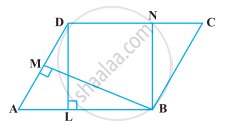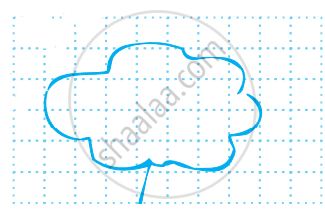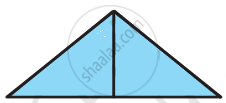Advertisements
Advertisements
प्रश्न
In the following figure, the area of parallelogram ABCD is ______.

विकल्प
AB × BM
BC × BN
DC × DL
AD × DL
उत्तर
In the following figure, the area of parallelogram ABCD is DC × DL.
Explanation:

We know that, area of parallelogram is the product of its any side and the corresponding altitude (or height).
Here, when AB is base, then height is DL.
Area of parallelogram = AB × DL and when AD is base, then height is BM.
Area of parallelogram = AD × BM When DC is base, then height is DL.
Area of parallelogram = DC × DL and when BC is base, then height is not given.
APPEARS IN
संबंधित प्रश्न
ABCD is a parallelogram whose diagonals intersect at O. If P is any point on BO, prove
that: (1) ar (ΔADO) = ar (ΔCDO) (2) ar (ΔABP) = ar (ΔCBP)
ABCD is a parallelogram whose diagonals AC and BD intersect at O. A line through O
intersects AB at P and DC at Q. Prove that ar (Δ POA) = ar (Δ QOC).
P is any point on base BC of ΔABC and D is the mid-point of BC. DE is drawn parallel toPA to meet AC at E. If ar (ΔABC) = 12 cm2, then find area of ΔEPC.
ABCD is a parallelogram. P is any point on CD. If ar (ΔDPA) = 15 cm2 and ar (ΔAPC) = 20 cm2, then ar (ΔAPB) =
Find the area of a square, whose side is: 4.1 cm.
By counting squares, estimate the area of the figure.

Which has the bigger area - one of your footprints or the page of this book?
Is the area of the blue shape more than the area of the yellow shape? Why?


If each square on this page is equal to 1 square meter of land, how much land will each of her children get? ________ square m
An engineer who plans to build a compound wall on all sides of a house must find the area of the compound.
